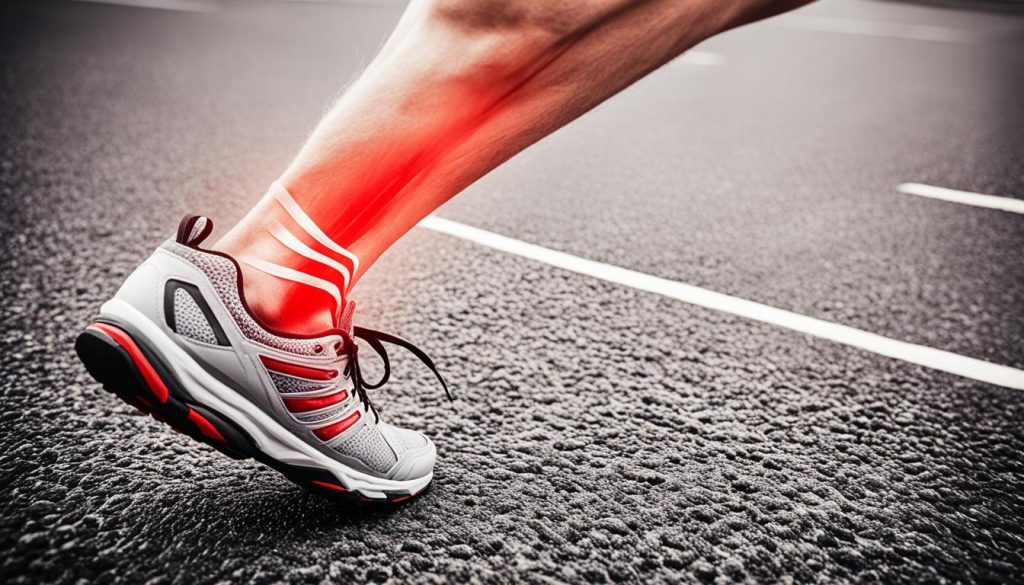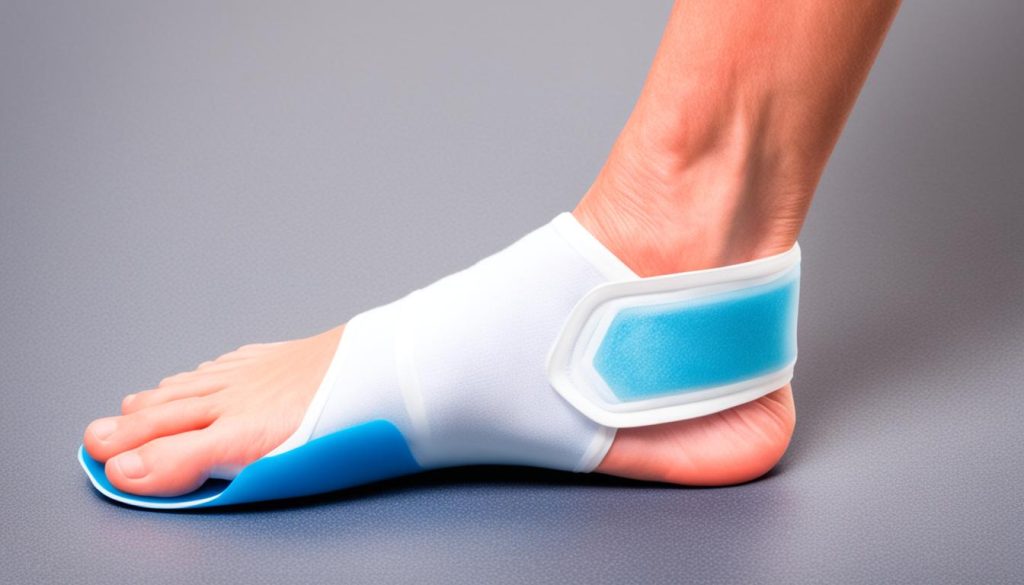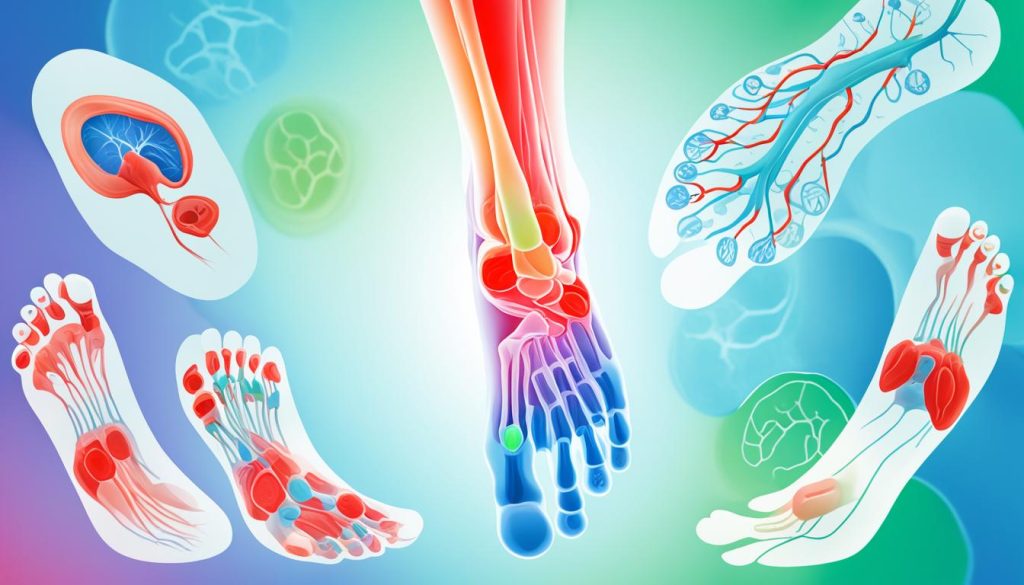Are you experiencing sudden foot pain, specifically in the top of your foot? This can be a concerning and uncomfortable sensation that may leave you wondering why it has suddenly appeared. In this article, we will explore the various causes of sudden foot pain and provide you with relief tips to help alleviate the discomfort. Understanding the underlying reasons for this type of pain is crucial in finding the right treatment and preventing future occurrences.
Why Does the Top of My Foot Hurt All of a Sudden?
Why does the top of my foot hurt all of a sudden? There can be several reasons for this sudden foot pain, including overexertion, tight or ill-fitting shoes, and certain medical conditions. The intensity of the pain can vary from mild to severe, and it is important to identify the root cause in order to seek appropriate relief and treatment.
Join us as we delve into the common causes of top of foot pain, discuss effective methods for treating sudden foot pain, and explore the possible health conditions associated with this discomfort. We will also provide insights on when it is necessary to seek medical help and offer prevention and self-care tips to help you manage and prevent foot pain.
Common Causes of Top of Foot Pain
Pain in the top of the foot can be debilitating and impact daily activities. Understanding the common causes of this discomfort can help find relief and prevent future occurrences. Several factors contribute to top of foot pain, including:
- Overuse or repetitive stress on the foot, such as running or jumping
- Tight or ill-fitting shoes
- Sprains or strains
- Tendonitis
- Gout
Overuse or repetitive stress on the foot, particularly from activities like running or jumping, can strain the tendons and ligaments in the foot. This can lead to inflammation and pain in the top of the foot. It is important to gradually increase physical activity and wear appropriate footwear with sufficient cushioning and support.
Wearing tight or poorly fitting shoes can also contribute to top of foot pain. Shoes that are too narrow or have rigid soles can put pressure on the foot’s structures, causing discomfort. Ensuring proper shoe fit and choosing footwear with adequate room for the toes can alleviate this issue.
Injuries such as sprains or strains, often caused by sudden movements or accidents, can result in top of foot pain. These injuries can damage the ligaments, tendons, or bones in the foot, leading to inflammation and discomfort. Rest, ice, compression, and elevation (RICE) therapy, along with wearing supportive shoes, can aid in the healing process.
Tendonitis, which is the inflammation of the tendons, can cause pain in the top of the foot. Tendonitis commonly occurs as a result of overuse or repetitive motion. Resting the foot, applying ice packs, and wearing supportive shoes can help relieve the discomfort and promote healing.
Gout is a form of arthritis that causes sudden and severe pain, typically in the big toe joint. However, it can also affect the top of the foot. Gout occurs when uric acid crystals accumulate in the joints, leading to inflammation. Managing gout involves lifestyle changes, medication, and avoiding trigger foods that are high in purines.

Treating Sudden Foot Pain
Treatment for sudden foot pain depends on the underlying cause. Fortunately, there are several effective methods for foot pain relief and management. Here are some treatment options to consider:
1. Rest and Elevation
Resting the affected foot and elevating it can help reduce inflammation and relieve pain. Find a comfortable position where you can elevate your foot above heart level to promote blood circulation and reduce swelling. Take breaks to rest your feet throughout the day, especially after physical activity.
2. Ice Packs
Applying ice packs to the painful area can help reduce swelling and numb the area, providing temporary pain relief. Wrap an ice pack in a thin cloth and apply it to the top of your foot for about 15 minutes at a time, several times a day. Remember to give your skin breaks between icing sessions to prevent ice burn.
3. Over-the-Counter Pain Relievers
Over-the-counter nonsteroidal anti-inflammatory drugs (NSAIDs), such as ibuprofen or naproxen, can help reduce pain and inflammation. Follow the dosage instructions on the packaging and consult with a healthcare professional if you have any concerns or underlying medical conditions.
4. Proper Footwear
Wearing shoes that provide ample room and support is crucial for foot pain management. Opt for footwear that fits well and offers cushioning and arch support. Avoid shoes that are too tight or narrow, as they can exacerbate foot pain. Consider using orthotic inserts to provide additional support and alignment for your feet.
5. Healthcare Professional Consultation
If the sudden foot pain persists or worsens, it is advisable to seek medical attention. A healthcare professional can evaluate your condition, diagnose the underlying cause of your foot pain, and recommend appropriate treatment options. They may refer you to a specialist such as a podiatrist or a physical therapist for further evaluation and care.
Remember, while the above treatment options may provide temporary relief, a healthcare professional can provide personalized recommendations based on your specific condition and needs. They can develop a comprehensive foot pain management plan to address the root cause of your pain and promote long-term relief.

Consult a healthcare professional for proper diagnosis and treatment of sudden foot pain. With the right approach and guidance, you can effectively manage foot pain and get back to your daily activities without discomfort.
Possible Health Conditions and Foot Pain
Foot pain can sometimes be a symptom of an underlying health condition. When experiencing foot pain, it is crucial to consult a healthcare provider for an accurate diagnosis and appropriate treatment. Certain health conditions can cause pain in the top of the foot, including:
- Arthritis: A chronic condition characterized by inflammation and stiffness in the joints. Arthritis can affect the foot and contribute to foot pain.
- Diabetes: High blood sugar levels in diabetes can lead to nerve damage and poor circulation, resulting in foot pain, including pain in the top of the foot.
- Gout: Gout is a type of arthritis caused by the buildup of uric acid crystals in the joints. It commonly affects the big toe but can also cause pain in the top of the foot.
If foot pain persists or is accompanied by other symptoms such as swelling, redness, or difficulty walking, it is essential to seek medical advice for proper foot pain diagnosis and timely treatment.

| Condition | Symptoms | Treatment |
|---|---|---|
| Arthritis | Pain, stiffness, swelling | Medication, physical therapy, lifestyle changes |
| Diabetes | Numbness, tingling, slow healing | Blood sugar management, foot care, medication |
| Gout | Sudden, intense pain, redness | Pain medication, lifestyle changes, dietary modifications |
A healthcare professional can provide appropriate treatment options based on the specific condition and individual needs, ensuring effective relief and management of foot pain.
Seeking Medical Help for Foot Pain
If home remedies and self-care measures do not provide relief for sudden foot pain, it may be necessary to seek medical help. Consulting with a healthcare provider can help determine the underlying cause of the pain and develop an effective treatment plan. During the appointment, the healthcare provider will conduct a thorough examination, which may include ordering diagnostic tests such as X-rays or MRI scans to evaluate the condition of the foot.
Based on the findings, the healthcare provider will recommend specific treatments for the foot pain. These may include:
- Physical therapy: A healthcare provider may prescribe physical therapy sessions to help improve foot strength, flexibility, and overall function. Physical therapists can guide individuals through exercises and stretches that target the specific area of pain, facilitating the healing process.
- Medication: In some cases, medication may be prescribed to manage sudden foot pain. This may include non-steroidal anti-inflammatory drugs (NSAIDs) to reduce swelling and relieve pain.
- Orthotics and footwear modifications: A healthcare provider may recommend the use of orthotic devices, such as shoe inserts or custom-made orthotics, to provide additional support and alignment for the foot. They may also advise on appropriate footwear modifications to relieve pressure and reduce discomfort.
Possible Medical Interventions for Foot Pain Treatment
If conservative treatments do not effectively alleviate sudden foot pain, medical interventions may be considered. These options are typically reserved for severe or persistent cases and may include:
- Steroid injections: Corticosteroid injections can help reduce inflammation and provide temporary relief for intense foot pain. These injections are typically administered directly into the affected area by a healthcare provider.
- Minimally invasive procedures: Some foot pain conditions may require minimally invasive procedures, such as extracorporeal shockwave therapy (ESWT) for plantar fasciitis or arthroscopy for certain joint conditions. These procedures aim to address specific issues causing foot pain.
- Surgery: In rare cases, surgery may be necessary to correct underlying structural abnormalities or severe injuries causing sudden foot pain. Surgical options will depend on the individual’s condition and the recommendations of the healthcare provider.
It is important to work closely with a healthcare provider to determine the most appropriate treatment approach for sudden foot pain. They will provide personalized guidance based on the individual’s specific condition and medical history, ensuring the best possible outcome.
| Treatment | Description |
|---|---|
| Physical therapy | Consists of exercises and stretches to improve foot strength and flexibility, managed by a physical therapist. |
| Medication | Prescribed drugs, such as NSAIDs, to alleviate pain and reduce inflammation in the foot. |
| Orthotics and footwear modifications | Use of shoe inserts or custom orthotics to provide additional support and alignment. Recommended footwear modifications may also be suggested. |
| Steroid injections | Corticosteroid injections directly into the affected area to reduce inflammation and relieve intense foot pain. |
| Minimally invasive procedures | Procedures like ESWT or arthroscopy targeting specific foot pain conditions for pain relief. |
| Surgery | In extreme cases, surgical intervention may be required to address severe injuries or structural abnormalities causing sudden foot pain. |
Prevention and Self-Care for Foot Pain
To prevent foot pain and ensure optimal foot health, it is important to practice proper foot care and maintenance. By taking proactive measures, you can reduce the risk of developing foot pain and discomfort. Here are some essential tips for foot pain prevention and self-care:
- Choose supportive and well-fitting shoes: Wearing shoes that provide adequate support and a proper fit is crucial for foot health. Opt for footwear that offers cushioning, arch support, and enough room for your toes to move comfortably. Avoid high heels and narrow-toed shoes that can contribute to foot pain and deformities.
- Gradually increase physical activity: If you engage in physical activities that put pressure on your feet, such as running or jumping, it is essential to gradually increase the intensity and duration of these activities. Sudden spikes in activity levels can strain your feet, leading to pain and injuries.
- Allow ample rest and recovery time: Your feet need time to rest and recover from daily activities. Make sure to incorporate regular breaks and rest periods throughout the day. Elevating your feet and applying ice packs can help reduce inflammation and alleviate foot pain.
- Maintain a healthy weight: Excess weight can put extra strain on your feet, leading to foot pain and discomfort. Maintain a healthy weight by following a balanced diet and engaging in regular physical activity. This will help alleviate stress on your feet and lower the risk of foot problems.
- Practice overall good health habits: Taking care of your overall health can have a positive impact on your feet. Make sure to stay hydrated, eat nutritious meals, and manage stress levels. These lifestyle factors can contribute to the overall well-being of your feet.
If you experience foot pain, self-care measures can often provide relief. Resting the affected foot, applying ice packs for 15-20 minutes several times a day, and taking over-the-counter pain relievers like ibuprofen or acetaminophen can help alleviate symptoms. It is important to note that if the pain persists or worsens, it is advisable to seek medical attention for a proper diagnosis and treatment plan.
Remember, prevention is key when it comes to foot pain. By implementing these self-care practices and following preventive measures, you can maintain healthy and pain-free feet.

Visual representation of proper foot care is essential for preventing foot pain.
Conclusion
In conclusion, sudden foot pain in the top of the foot can be a distressing experience. This pain can stem from various causes, including overuse, wearing tight shoes, and underlying health conditions. Identifying the underlying cause is crucial in order to find appropriate relief and treatment.
If home remedies such as rest, ice packs, and over-the-counter pain relievers do not provide sufficient relief, it is important to seek medical attention. A healthcare professional can conduct a thorough evaluation, provide a proper diagnosis, and recommend specific treatments based on the cause of the pain. Physical therapy, medication, or other interventions may be necessary for effective management of foot pain.
Prevention and self-care play a vital role in managing and preventing foot pain. By maintaining proper foot care and wearing supportive and well-fitting shoes, individuals can reduce the risk of foot pain. Gradually increasing the intensity and duration of physical activity, as well as allowing the feet ample rest and recovery time, can also help prevent foot pain. It is equally important to maintain overall good health and a healthy weight to minimize the likelihood of foot pain.
In summary, sudden foot pain in the top of the foot can occur due to overuse, ill-fitting shoes, or underlying health conditions. It is crucial to identify the cause and seek appropriate treatment. By practicing proper foot care, seeking timely medical help, and taking preventive measures, individuals can effectively manage and prevent foot pain, ensuring optimal foot health and overall well-being.




